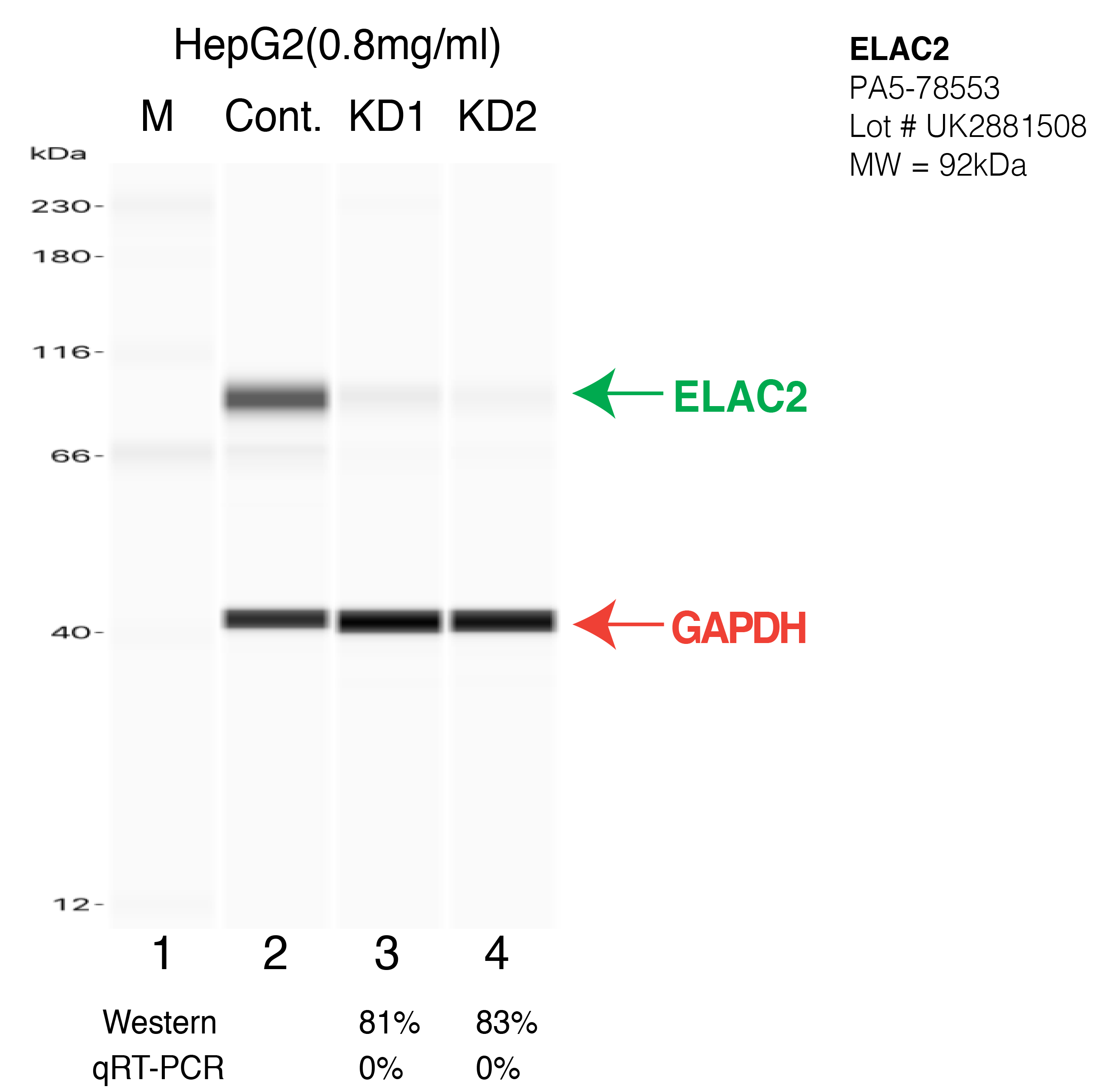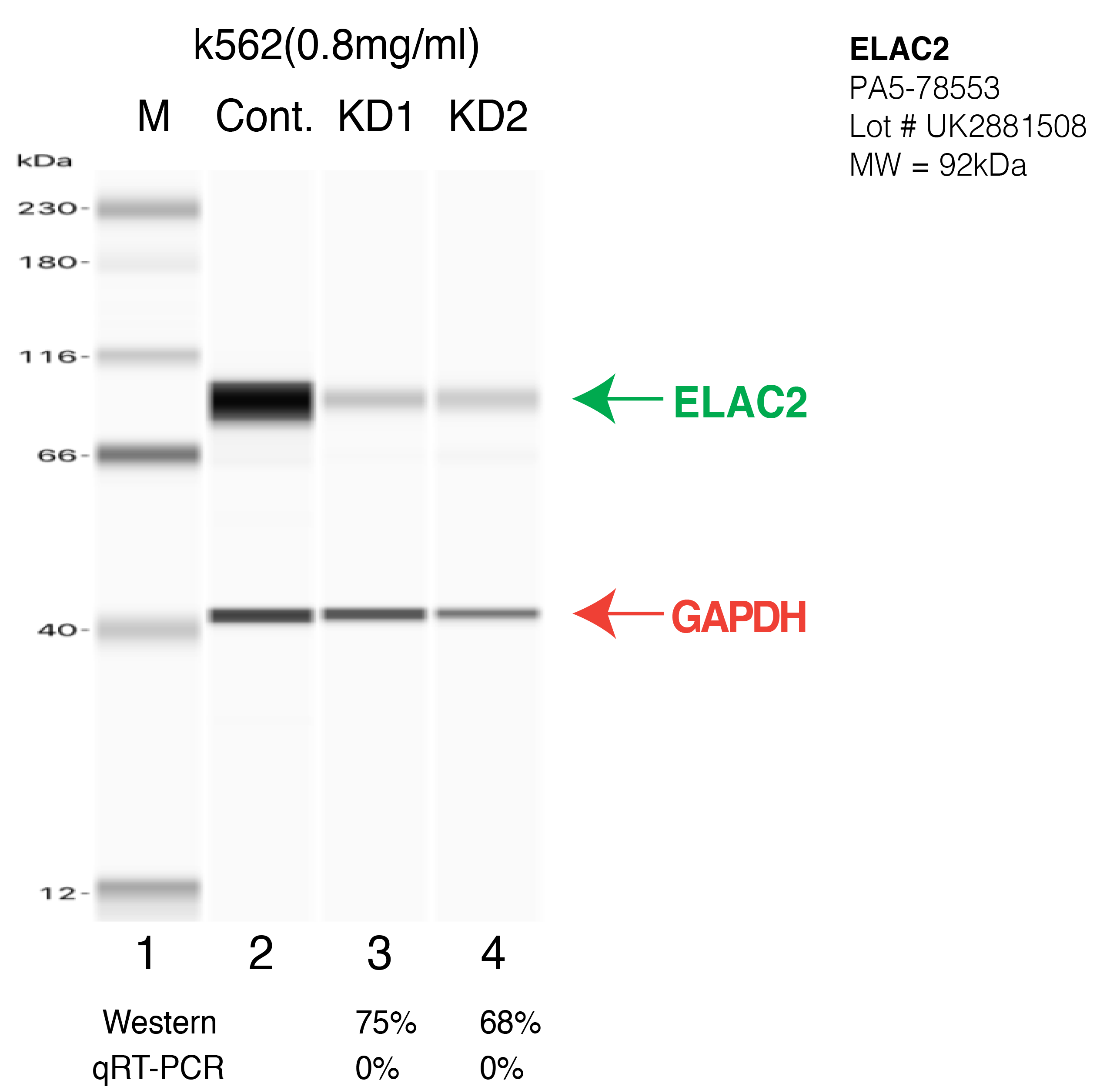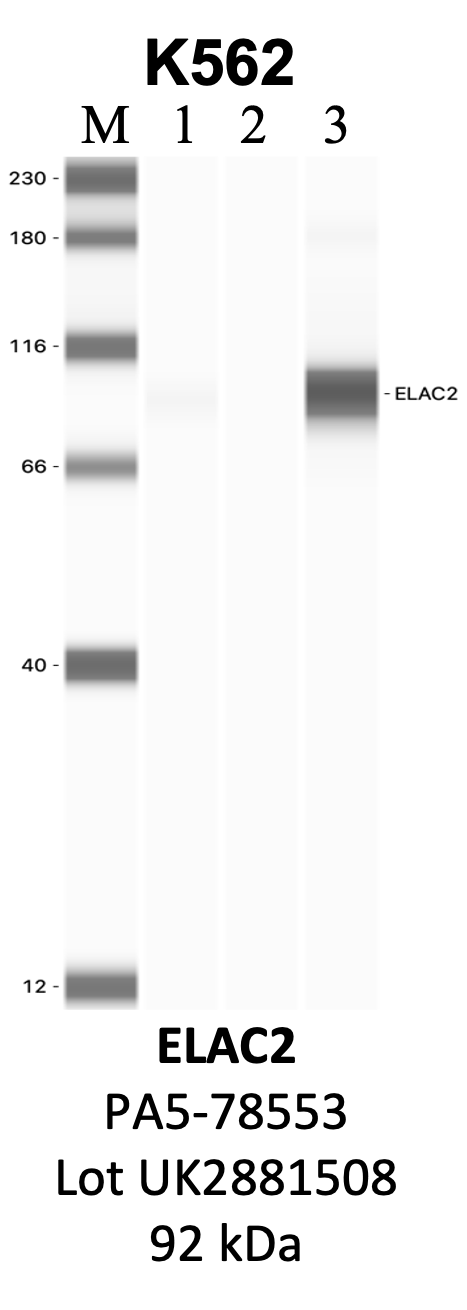ENCAB519QXK
Antibody against Homo sapiens ELAC2
Homo sapiens
K562
characterized to standards
- Status
- released
- Source (vendor)
- Thermo Fisher
- Product ID
- PA5-78553
- Lot ID
- UK2881508
- Characterized targets
- ELAC2 (Homo sapiens)
- Host
- rabbit
- Clonality
- polyclonal
- Purification
- affinity
- Isotype
- IgG
- Antigen description
- Recombinant protein encompassing a sequence within the center region of human ELAC2. The exact sequence is proprietary.
- External resources
Characterizations
ELAC2 (Homo sapiens)
compliant
- Caption
- Western blot following CRISPR against ELAC2 in HepG2 whole cell lysate using ELAC2 specific antibody. Lane 1 is a ladder, lane 2 is HepG2 non-targeting control knockdown, lane 3 and 4 are two different CRISPR against ELAC2. ELAC2 protein appears as the green arrow, GAPDH serves as a control and appears in red arrow.
- Submitted by
- Xintao Wei
- Lab
- Brenton Graveley, UConn
- Grant
- U41HG009889
- Download
- ELAC2-HEPG2-CRISPR-PA5-78553.png
ELAC2 (Homo sapiens)
compliant
- Caption
- Western blot following CRISPR against ELAC2 in K562 whole cell lysate using ELAC2 specific antibody. Lane 1 is a ladder, lane 2 is K562 non-targeting control knockdown, lane 3 and 4 are two different CRISPR against ELAC2. ELAC2 protein appears as the green arrow, GAPDH serves as a control and appears in red arrow.
- Submitted by
- Xintao Wei
- Lab
- Brenton Graveley, UConn
- Grant
- U41HG009889
- Download
- ELAC2-k562-CRISPR-PA5-78553.png
ELAC2 (Homo sapiens)
K562
compliant
- Caption
- IP-WB analysis of K562 whole cell lysate using the ELAC2 specific antibody, PA5-78553. Lanes 1 and 2 are 2.5% of five million whole cell lysate input and 50% of IP enrichment, respectively, using a normal IgG antibody. Lane 3 is 50% of IP enrichment from five million whole cell lysate using the ELAC2-specific antibody, PA5-78553. The same antibody was used to detect protein levels via Western blot. This antibody passes preliminary validation and will be further pursued for secondary validation. *NOTE* Protein sizes are taken from Genecards.org and are only estimates based on sequence. Actual protein size may differ based on protein characteristics and electrophoresis method used.
- Submitted by
- Steven Blue
- Lab
- Gene Yeo, UCSD
- Grant
- U41HG009889


